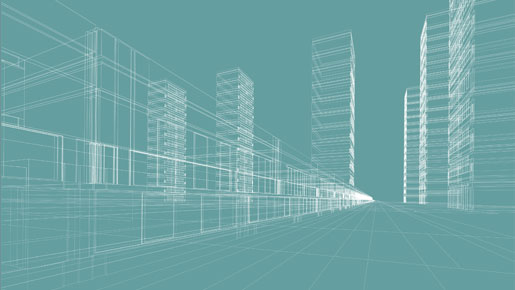
The current economic and financial climate poses big challenges for investors. A high degree of uncertainty, poor growth outlook and volatility in financial markets have increased risk aversion to an exceptional level. Yet in this period of financial market turbulence − since the summer of 2011 − good quality real estate has displayed remarkable price stability, with institutional investors, sovereign wealth funds and high-net-worth individuals increasing their allocations to the sector.
Relative price stability is one of the key attractions of commercial property for many multi-asset investors. Partly this comes from the high (relative to equities for example) income component of the return from property. However, the fact that, as a ‘real’ asset, it is very unusual to see a total loss – unlike bond or shares – probably makes a more important contribution.
‘Real’ security in a crisis
The experience of the Lehman collapse provides a clear example of this. It is unlikely that either bondholders or shareholders will get a substantial return from the winding up process. Even senior bondholders are expected to see a return of less than 25 cents on the dollar. Compare this with the position of the former owners of Lehman’s UK headquarters.
The administrator continued to pay most of the rent while the European operations were being transferred to Nomura and subsequently, acting on behalf of the owners, CBRE was able to sell the building itself for £495m. At times of high market uncertainty and volatility, this downside protection is a quality of real estate that is highly valued by investors.
The income return component of property returns also provides strong support for prices in the current market. Even top-quality property in the centre of a major European city (either offices or shops) is likely to generate an initial income return of four to five percent. This contrasts with a current yield below 2.5 percent from UK or German government bonds. The ‘yield gap’ between property and top-rated bonds is larger now than at any time since the 1960s and this premium is resulting in an increased flow of capital to commercial real estate.
The other feature of real estate that is often highlighted by investors as one of its most important attractions is the way in which it combines features of both bonds and equities. In the short term, well-let real estate has the certainty of income that investors also get from bonds, whereas in the longer term, there is potential for that income to increase in line with market rents (providing a partial hedge against inflation). In many countries it is also common for the property owner to benefit from annual increases in income in line with inflation or some other price index for the duration of the lease.
In the current crisis, this ability to provide both certainty of income and the possibility of potential uplifts in rent paid (and thus in capital value) is particularly valuable. Economic uncertainty increases the importance of guaranteed income. However, there is always the risk that policy responses to the crisis – such as quantitative easing – will ultimately be inflationary, putting the value of long-term fixed-income investments at risk.
No space to grow
This is not to say that commercial real estate is without risk. Ultimately the value of property is dependent on its ability to continue to generate income from its occupiers.
The weak economic outlook in Western Europe suggests that growth in demand for property will be low in the near term. However, to an extent this is being offset by the very limited amount of new development in the pipeline. Since the start of the financial crisis, the availability of debt to finance development has been very limited. In the office sector the annual amount of new space being completed in Western Europe is only around one percent of the existing stock – a 30-year low. The long development process also means that this will continue to be the case until at least 2014 and if financing conditions remain tight – as seems very likely – may extend beyond that.
This lack of development is also evident in the retail sector, where there is very little new floorspace being delivered. As much of the existing stock does not meet retailers’ current requirements, this is a constraint on the expansion plans of those retailers that are managing to increase their market share through the crisis. As a result, the occupancy rate for Europe’s best shopping centres has remained high. The strong demand for well-located modern shopping space was illustrated by CBRE’s success in leasing Westfield Stratford – Europe’s largest urban centre shopping centre – which opened in September 2011 with 95 percent occupancy.
Stability amidst volatility
The same constrained debt market that is limiting new development should also increase the future price stability of real estate. In the past, price volatility has often been associated with the rapid expansion of debt, followed by its equally rapid contraction. However, lenders are now burdened with a legacy of real estate debt, much of which is secured against poor quality property that is unattractive to today’s active investors. As a result, the sector is likely to experience an extended period of constrained debt availability that will reduce the volatility of capital values for good quality real estate.
Looking ahead, we expect that high-quality commercial real estate will continue to demonstrate the price stability that has been evident in the second half of 2011 and will thus continue to experience strong demand from a wide variety of investors. With equities prone to ongoing volatility and ultra-low returns on cash and government bonds, property’s high and steady income makes a powerful case for investment in highly uncertain times.
For more information please visit www.cbre.eu/research

